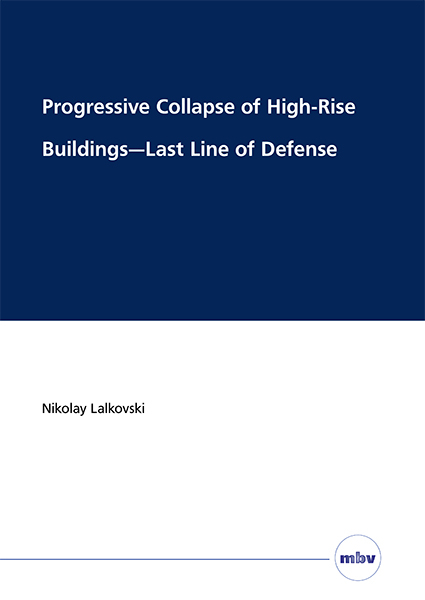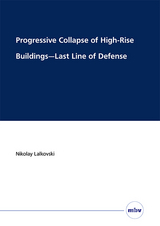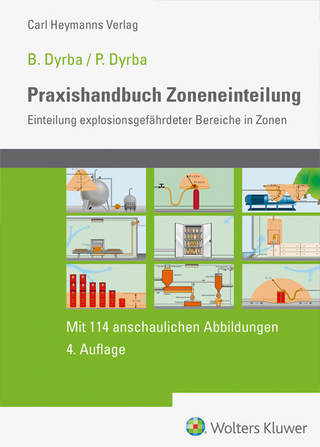Progressive Collapse of High-Rise Buildings - Last Line of Defense
Seiten
2022
|
1. Aufl.
Mensch & Buch (Verlag)
978-3-96729-145-2 (ISBN)
Mensch & Buch (Verlag)
978-3-96729-145-2 (ISBN)
- Keine Verlagsinformationen verfügbar
- Artikel merken
The total collapse of the WTC Twin Towers in New York following the terror attack on 11 September 2001 was a world-shattering event that raised numerous questions, many of which are still not satisfactorily answered. Two are the main questions that can be asked with regard to this collapse from an engineering point of view: First, how did the intact building section above the aircraft impact zone—the ‘intact upper section’ (IUS)—begin its descent? And second, once the IUS was set in motion, how did it manage to destroy the entire intact lower section (ILS) of the building? If the Twin Towers are viewed as fortresses under siege, the first of the above questions addresses the outermost defense line of a fortress. Another, posterior, but no less important defense line is addressed by the second question. The unfortunate inadequacy of this posterior defence line in the Twin Towers’ case must not be allowed to hide the fact that it in principle exists. Had this posterior defense line been adequate in the Twin Towers, the consequences of penetrating the previous defense line would have been far less severe, since the ILS, which made up the larger part of both towers, would have been saved.
This work focuses on the said posterior defense line, which turns out to be the last one. The objective is to follow the recommendation at the end of the World Trade Center building performance study released by the Federal Emergency Management Agency (FEMA) in 2002, and to “determine, given the great size and weight of the two towers, whether there are feasible design and construction features that would permit such buildings to arrest or limit a collapse, once it began.”
This question is considered after making the following assumption regarding collapse initiation: the load-bearing capacity of the columns across the entire cross section of a high-rise building is completely lost over the height of several neighboring intermediate stories as a result some abnormal event. The building is thus separated into three distinct sections at collapse initiation: the aforementioned intact upper section (IUS) and intact lower section (ILS), as well as a damaged intermediate section (DIS), containing the stories whose columns have lost their load-bearing capacity. Since the DIS cannot be saved, and since the amount of tilt the IUS develops during its free fall is outside of our control, so that this latter section must be written off as well, the essential question is whether and, if yes, under what conditions the ILS can be saved.
The obtained results show that if the ILS is topped by a floor plate strong enough to fully mobilize the underlying columns—a floor plate referred to as “strong”—, these columns will generally need little, if any, additional strengthening beyond the provision of ordinary design to be able to cope with the force from the collapsing DIS and IUS: The peak magnitude of this force turns out to be about three times the total static weight of the DIS and IUS. Furthermore, any strengthening beyond the provision of ordinary design can be avoided for the ILS columns if the strong floor plate topping the ILS is covered by energy absorbers—elements designed to yield at a defined force; the deformation capacity demand on such absorbers turns out to be small enough for this to be a viable option. Finally, a design concept is presented that incorporates a strong floor plate every approximately fifteen stories.
This work focuses on the said posterior defense line, which turns out to be the last one. The objective is to follow the recommendation at the end of the World Trade Center building performance study released by the Federal Emergency Management Agency (FEMA) in 2002, and to “determine, given the great size and weight of the two towers, whether there are feasible design and construction features that would permit such buildings to arrest or limit a collapse, once it began.”
This question is considered after making the following assumption regarding collapse initiation: the load-bearing capacity of the columns across the entire cross section of a high-rise building is completely lost over the height of several neighboring intermediate stories as a result some abnormal event. The building is thus separated into three distinct sections at collapse initiation: the aforementioned intact upper section (IUS) and intact lower section (ILS), as well as a damaged intermediate section (DIS), containing the stories whose columns have lost their load-bearing capacity. Since the DIS cannot be saved, and since the amount of tilt the IUS develops during its free fall is outside of our control, so that this latter section must be written off as well, the essential question is whether and, if yes, under what conditions the ILS can be saved.
The obtained results show that if the ILS is topped by a floor plate strong enough to fully mobilize the underlying columns—a floor plate referred to as “strong”—, these columns will generally need little, if any, additional strengthening beyond the provision of ordinary design to be able to cope with the force from the collapsing DIS and IUS: The peak magnitude of this force turns out to be about three times the total static weight of the DIS and IUS. Furthermore, any strengthening beyond the provision of ordinary design can be avoided for the ILS columns if the strong floor plate topping the ILS is covered by energy absorbers—elements designed to yield at a defined force; the deformation capacity demand on such absorbers turns out to be small enough for this to be a viable option. Finally, a design concept is presented that incorporates a strong floor plate every approximately fifteen stories.
| Erscheinungsdatum | 29.01.2022 |
|---|---|
| Verlagsort | Berlin |
| Sprache | englisch |
| Maße | 148 x 210 mm |
| Gewicht | 700 g |
| Themenwelt | Technik |
| Schlagworte | 11 September 2001 • Absorbers • arrest or limit a collapse • collapse of the WTC Twin Towers • columns • defense line • Deformation Capacity • Design concept • energy absorbers • feasible design and construction features • Federal Emergency Management Agency (FEMA) • floor plate • Load-bearing capacity • load-bearing capacity of the columns • prevention of the collapse • strong floor plate • strong floor plate every approximately fifteen stories • Twin Towers • World Trade Center • yield at a defined force |
| ISBN-10 | 3-96729-145-6 / 3967291456 |
| ISBN-13 | 978-3-96729-145-2 / 9783967291452 |
| Zustand | Neuware |
| Informationen gemäß Produktsicherheitsverordnung (GPSR) | |
| Haben Sie eine Frage zum Produkt? |
Mehr entdecken
aus dem Bereich
aus dem Bereich
mit Berechnungshinweisen und Beispielen
Buch | Hardcover (2024)
Reguvis Fachmedien (Verlag)
56,00 €
Lern- und Arbeitsbuch (mit digitalem Training zum Downloaden)
Buch (2024)
SecuMedia (Verlag)
29,90 €




